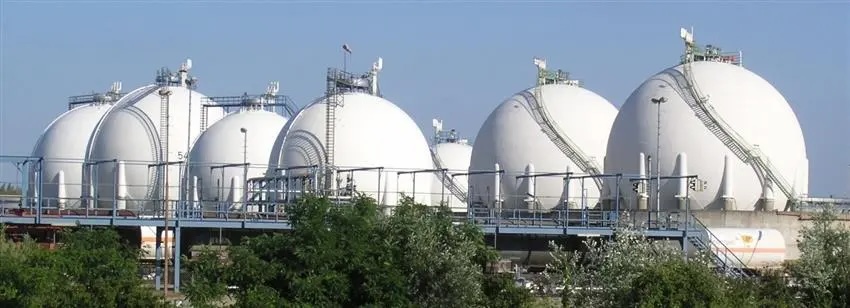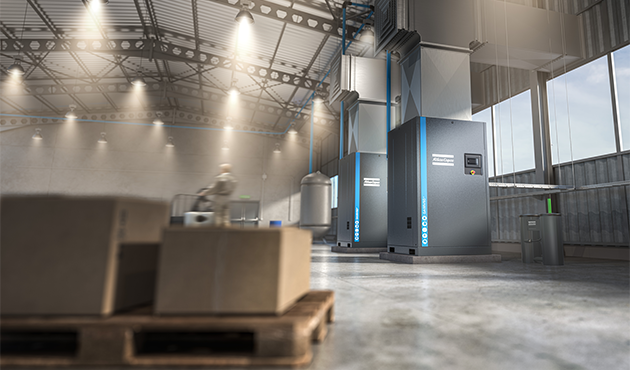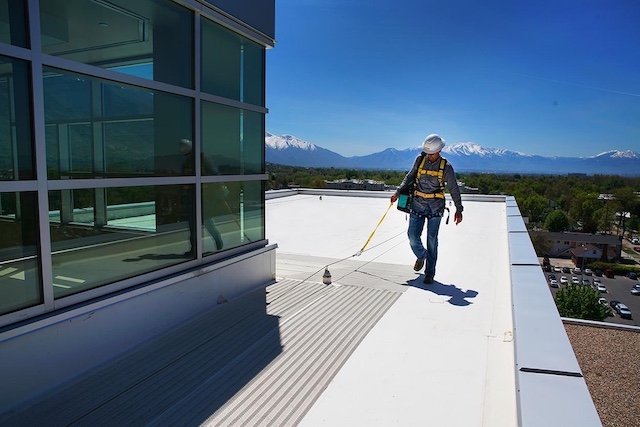Choosing the most appropriate protective apparel is a job in itself. With differing standards and guidelines, changing regulations, and a checklist of criteria including design, fit, and cost, there's a lot to consider. Of course, the primary responsibility of protective clothing is to protect the wearer - the critical factor in selecting proper apparel.
Choosing the most appropriate protective apparel is a job in itself. With differing standards and guidelines, changing regulations, and a checklist of criteria including design, fit, and cost, there’s a lot to consider.
Of course, the primary responsibility of protective clothing is to protect the wearer — the critical factor in selecting proper apparel.
Protective garments ensure the safety of workers in hazardous environments. Hazards present in the work area, as well as the dangers associated with these substances, should be considered when making a selection.
Risk assessment
Safety professionals and their employers must, at all times, identify and understand the potential hazards workers may be exposed to and properly train them in selecting and wearing the appropriate apparel.
The first step in choosing the right protective clothing is to identify the substances (particulates, liquids, or gases) present in the work area, as well as the hazards associated with these substances, such as dermal toxicity, reactivity, etc. A survey of the work area must be completed. The survey should list physical or environmental hazards, such as sharp instruments, rough surfaces, or machinery. Also, make a list of who will be wearing the clothing, work that person will do, and what equipment will be used.
Once this task has been accomplished, determine the potential hazard exposure for each worker task. Ask the following questions to determine if there is anything specific to the worker’s tasks that will require special protection.
In what state will the hazardous substance be present: solid, liquid, or gas?
What is the route of potential exposure: respiratory, dermal, or ingestion?
Is exposure expected?
What is the frequency and duration of exposure?
What are the expected short-term and long-term physical outcomes if exposure occurs?
What engineering changes can be made to eliminate or minimize the hazard?
Will all machinery be properly guarded?
What changes can be made to worker tasks to eliminate or minimize the hazard?
Once the task is engineered as safely as possible, it is time to select protective apparel. Protective clothing should be evaluated based on its fabric, seam construction, overall design, sizing, and fit.
Fabric selection
The nature of the hazard dictates the appropriate clothing. Breathability and comfort of the garment are also critical factors, especially when trying to prevent heat stress. Keep in mind that when workers are more comfortable, they are more productive.
With today’s advances in materials and designs, there is no need to sacrifice comfort for safety.
Keeping clean
For tasks involving nonhazardous substances where keeping clean is most important, lightweight, breathable, and durable fabrics serve the purpose. When working with nonhazardous, particulate substances like dirt, sand, or grime, make sure the fabric demonstrates adequate particulate holdout properties. The key is to find a fabric that resists particulates from the outside while allowing moisture, vapor, and air to pass through for added comfort. Spunbond-meltblown-spunbond laminates provide a high level of comfort and protection.
Nonhazardous liquid splash or mist
Situations where there are nonhazardous liquid splash or mists, such as water, oil, or detergents, call for a fabric with liquid resistance. Look for garments with outer layers constructed of a cloth-like, yet tough and abrasion-resistant, spunbond polypropylene. Middle layers made of a breathable, microporous film offer resistance to many nonhazardous liquids without compromising comfort.
Hazardous liquid or vapor
The highest level of fabric protection is needed for hazardous liquid or vapor exposure. Special gas or vapor protective suits may be required where exposure to hazardous vapor or gas can occur. These suits have a construction in which not only the fabric needs to resist hazardous materials, but the suit also maintains 4-in. positive air pressure with up to a 20% drop in pressure after 4 min in a standard inflation test (ref. ASTM F1052). Since hazardous liquid or vapor exposure may pose a serious threat to health, the fabric must demonstrate appropriate resistance to the chemicals being handled.
Penetration and permeation
When choosing chemical protective apparel, both penetration and permeation testing of the fabric should be considered. Penetration is the flow of bulk liquid through a material, or through seams or closures. Penetration resistance of protective clothing materials is measured using ASTM F903, which is a standard test method that visually determines material barrier performance against liquid chemicals under conditions of continuous contact. Permeation is the process by which a chemical moves through protective clothing material on a molecular level. ASTM F739 provides a standard test method to measure the resistance of protective clothing materials to permeation by liquids or gaseous chemicals under conditions of continuous contact.
It is important when looking at manufacturers’ penetration and permeation data to ask the following questions about reported results.
How recent are the data? Continual improvements in testing methods and detection may make recent testing more accurate.
How confident are you in the data? More tests improve the accuracy of reported results. Repeated testing ensures that the results are representative of the current product performance.
How reliable are the data? Did an independent laboratory do the testing? Are the results reviewed for accuracy?
Garment fabrics are available with antistatic treatments to reduce static build-up and the likelihood of discharge — a consideration for workers in sensitive manufacturing, electronics, aerospace, pharmaceutical, and research laboratory settings. In addition, some garments feature a “glazing” process, which ties down outer fibers for low-lint performance. These garments can be appropriate for critical painting and finishing jobs in which lint can cause defects.
Seam construction
Seams are as important as the fabric, because they are the most vulnerable part of the garment. Look for garments with seams on the back instead of the front. This location provides more protection up front, where it is needed most.
Serged seams — a basic stitched seam — are most common in general protection apparel, where resistance to hazardous substances is not intended. Look for a three-thread overlap stitching for the strongest, most durable seam. A bound seam is reinforced with binding for strength and tear resistance. A taped seam is serged, then reinforced with a film tape designed to resistant water and many liquid chemicals. Serged and taped seams are most often found in liquid chemical protection garments.
Design and sizing
The right design and sizing help to ensure effective use, so it is important to evaluate the garment’s design. If the exposure potential is low, risk may be isolated to specific body areas. In this case, all that may be required are sleeve protectors or an apron. However, for moderate-to-high risks, full-body garments may be necessary.
Consider the combination of protective apparel and equipment that will be needed. Look at the garment’s hood, sleeves, and cuffs to make sure that they work with other required equipment, such as respirators, gloves, and footwear.
Sizing and cut are also critical. Remember, if the garment doesn’t fit, the apparel itself may become a hazard. Look for a generous cut, especially across the shoulders, body, and key stress areas. In addition to enhancing comfort, a fuller cut helps to reduce pulls, tears, and ripouts — protecting workers from an unplanned exposure, and ultimately reducing the number of garments used. An elastic waist can act as a belt for a better fit. A concealed zipper offers added strikethrough protection, and a longer zipper on coveralls make them easier to pull on and off.
Taking care of garments
Protective garments won’t provide the required protection if they are damaged. Garments should be replaced immediately if ripped, torn, abraded, punctured, or if wear is observed in the outer layer of the material. Unless specified, many
protective garments are not flame resistant, so keep them away from sparks, flames, and explosive environments.
— Edited by Cheryl Firestone, Senior Editor
Key concepts
The first step in choosing the right protective clothing is to identify the hazards present in the work area.
Protective clothing should be evaluated based on its fabric, seam construction, overall design, sizing, and fit.
Fabric technologies make garments safe and comfortable
When choosing a protective garment, breathability and comfort quality of the fabric are critical factors in preventing heat stress, improving worker productivity, and helping employees to comply with apparel wearing guidelines. Fortunately, recent advances in fabric development mean that safety professionals no longer need to trade off between comfort and protection. Two widely used fabric technologies for protective garments are spunbond-meltblown-spunbond multilayer laminates and breathable barrier film laminates.
Spunbond-meltblown-spunbond multilayer laminates — Nonwoven fabric constructions featuring outer layers made with spunbond polypropylene provide extra strength and cloth-like comfort. Meltblown middle layers composed of an intricate matrix of microfibers that act like a filter keep out many fine particulates and water-based liquids. Since these meltblown middle layers are breathable, both air and sweat vapor can pass through the garment to keep the skin cool, reducing the risk of heat stress in hot environments.
Breathable barrier film laminates — As an alternative, a microporous film middle layer provides repellency to many nonhazardous liquids, even when under pressure, such as when kneeling or flexing. This microporous film layer also provides resistance to many dry particulates, while allowing moisture and vapor (perspiration) to pass through for added comfort. Since the microporous film itself is usually not very durable or cloth-like, it is typically laminated to one or two non- woven layers, forming a “sandwich” with the film in the middle.
Additional resources
For information on protective apparel regulations, visit these web sites.
American Society for Testing Materials (ASTM): www.astm.org
National Fire Protection Association (NFPA): nfpa.org
American National Standards Institute (ANSI): ansi.org
International Safety Equipment Association (ISEA): safetycentral.org/isea/
National Institute for Occupational Safety & Health (NIOSH): cdc.gov/niosh/hompage.html
Occupational Safety & Health Administration (OSHA): osha.gov
Safety Equipment Institute (SEI): SEInet.org
American Industrial Hygiene Association (AIHA): aiha.org



